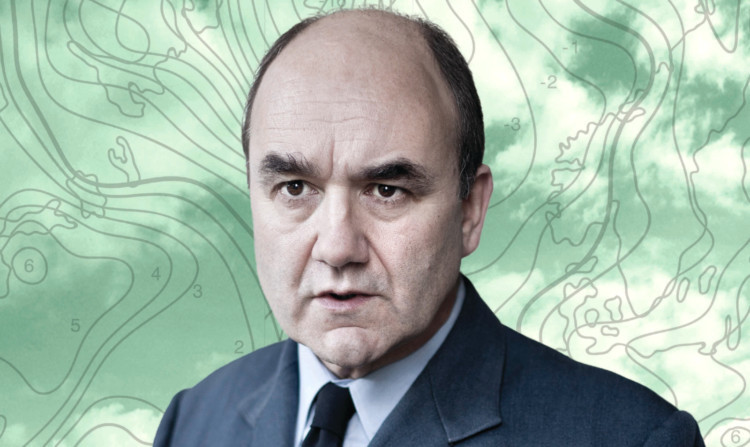
Captain James Martin Stagg played a key role in the D-Day landings.
With a furrowed brow and tense expression, Captain James Martin Stagg studied the weather charts.
The meteorologist was about to make the most important forecast the world had ever seen.
The son of a Dalkeith plumber turned to General Dwight D Eisenhower and advised that an unexpected break in the weather would make D-Day possible on June 6, 1944.
It was one of the most momentous calls in the history of war, and although Stagg was later knighted and awarded a CBE, his importance to the outcome of the Second World War has faded over time. But that could change 70 years on, with the production of a new play focussing on that seminal weather forecast.
Written by and starring David Haig, of The Thin Blue Line and Yes Minister fame, the aptly-titled Pressure is showing at the Royal Lyceum in Edinburgh. It’s time, the 58-year-old says, to remember Stagg’s part in history.
“Thousands of lives were at stake, dependant on the weather forecast,” Haig said.
“Stagg was the unsung hero of the war. His tenacity and obstinacy under huge pressure was great. The main players were housed up in Portsmouth for a few days before the invasion and that is where my play is set.
“If they didn’t go the next day, the outcome of war could have been delayed and far more lives would have been lost by lengthening the war.
“It was my director, John Dove, who asked me if I’d ever heard of James Stagg. When I went off and researched him, I was immediately hooked.
Haig continued: “I liked him. He could appear blunt and brisk, but had something extremely strong inside. He was reserved, but had a warmth that wasn’t immediately noticeable. He had great intensity and honesty.
“His dad was the Duke of Buccleuch’s personal plumber and James was a working-class Edinburgh man who read physics at university.
“During my research I read his memoirs and spoke with his wife, who only died last year.
“She told me about the secrecy he worked under she was pregnant when he went to Portsmouth and she didn’t know of the purpose of his trip.
“I also spoke with his sons, Peter and Sandy, and they are very happy their dad is receiving this attention.”
Winston Churchill described the operation as the most difficult and complicated to have ever taken place.
He said: “It involved tides, winds, waves, visibility both from the air and sea standpoint and the combined employment of land, air and sea forces in the highest degree of intimacy and in contact with conditions which could not and cannot be fully foreseen.”
Thanks to the wily and tenacious Scot, Eisenhower was able to make the call that changed the course of history.
Pressure is at the Royal Lyceum Theatre in Edinburgh until May 24.

Enjoy the convenience of having The Sunday Post delivered as a digital ePaper straight to your smartphone, tablet or computer.
Subscribe for only £5.49 a month and enjoy all the benefits of the printed paper as a digital replica.
Subscribe